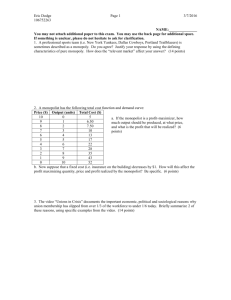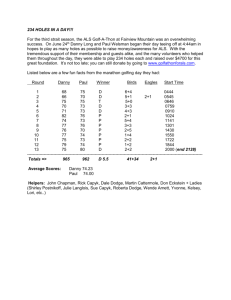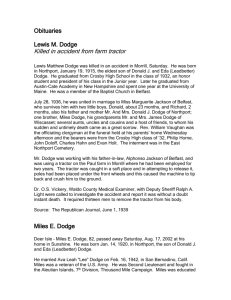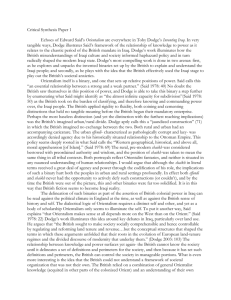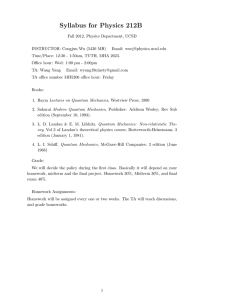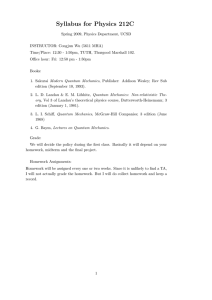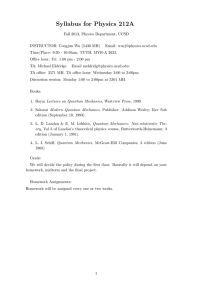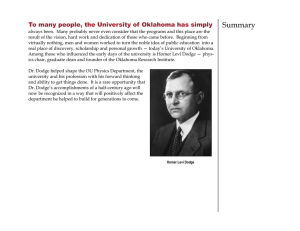Psychology 3260: Personality & Social Development
advertisement
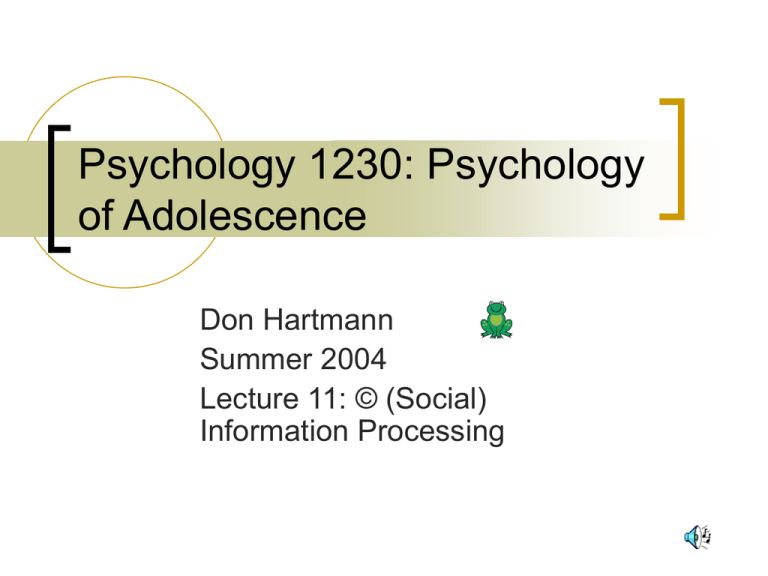
Psychology 1230: Psychology of Adolescence Don Hartmann Summer 2004 Lecture 11: © (Social) Information Processing 1 Quiz 1 Information 80% of the multiple choice items will come from the study guides. The MC portion of the quiz will contain 30-40 items from the following sources: 3-5 questions from each chapter, 1-2 items from each lecture, and 0-1 questions from each handout. The essay portion will include 3-5 relatively brief essay questions taken from the study guides. You will have some choice over which questions you can choose to answer 2 Discussion Topic #9 II: #1. IQ Myths: Whippets II: (SummaryEvaluation due on Monday, October 3rd ): Our culture has a substantial number of myths regarding IQ testing and the nature of what IQ tests measure. What are some of these myths? Do the myths have any truth to them? Are there any issues we should be particularly sensitive to if we were teaching a high school course in psychology while discussing IQ (Feel free to use your own experiences)? Also feel free to comment on other discussants’ comments. 3 Discussion Topic #10 II: #2. Modifying Self-Esteem: 4♀+1♂ II (Summary-Evaluation due on Tuesday, October 4th ): Both the text and the lecture discuss methods of modifying self-esteem. We have all had personal experiences in which our self-esteem was either substantially raised or lowered. Describe one of those experiences, and how it fits in, if at all, with the material on self-esteem in our text. Also feel free to comment on other discussants contributions. 4 Discussion Topic #11 #11. Best Things Teens do: Hotties II (SummaryEvaluation due on Wednesday, October 5th): The Friels have written about the best and worst things teens do. The list of Best things include the following: Become competent; master your feelings; break the silence: It takes so much energy to silently scream; get healthy power; face the serious stuff; find an identity; and start learning to stake out the extremes. How might you as a parent (or a teacher) facilitate these “Best things?” Comment on at least one of these “Best Things” in your response, and feel free to critically comment on the comments of others. 5 WEB Discussion Process Group Whippets Hotties 4♀+1♂ GypsyMafia JusticeLeague Psyched PithHelmets MAJACS #1 due 09/12 (09/19) 09/13 (No takers) 09/19 (09/19) 09/20 09/21 09/22 09/23 09/26 #2 due 10/03 10/05 10/04 #3 due #4 due #5 due ---------Note: Anyone can contribute to any WEB discussion; group members are responsible to summarizing the discussion. The last day to contribute to any discussion is 3 days before the due date. Dates in parenthesis indicate the date handed in. 6 Handout Summary Handout 14. 15. 16. 17. 18. 19. 20. 21. 22. 23. WEB Date Date HO-Completing a Film Review* HO-Preparing a Book Review Completed Class Locator 08/31 Lect. #4: Introduction to Theory Lect. #5: Bandura Supplemental Lecture: Termpaper Lect. #6: Method I Lect. #7: Method II Lect. #8: Puberty Lect. #9: Piaget 08/14 08/14 09/02 09/02 09/06 09/07 09/09 09/13 09/16 ----*Indicates handouts discussed in class. 7 Overview: Goals: To acquaint you with some of the notions of the information processing model and how they might change with development, and to show how such models may be applied to social phenomena Overlap with text, pp. 134-144 & pp. 357-358 Outline Introduction to Information Processing model Illustration: Dodge’s SIP applied to aggression Next: Lecture 10: Social Cognition 8 9 Lecture Resources Crick, N. R., & Dodge, K. A. (1994). A review and reformulation of social information processing mechanisms in children’s social adjustment. Psychological Bulletin, 115, 74-101. Dodge, K. A. (1986). A social information processing model of social competence in children. In M. Perlmutter (Ed.), Minnesota symposia on child psychology (vol. 18). Hillsdale, NJ: Erlbaum. 10 Introduction Text discusses basic information processing model—speed of processing; attention; short-term, working, and long-term memory; etc. 11 Information Processing: An introduction (1) Adolescents have more cognitive resources available to them because of automaticity, increased information processing capacity, and greater familiarity with a range of content knowledge. Short-term, working-, and long-term memory are all part of the information processing armamentarium. Each improves with age, perhaps into young adulthood 12 Information Processing: An introduction (2) Decision making improves with age, at least into adulthood. Critical thinking improves with age— perhaps substantially into adulthood 13 Introduction (2) We will explore how that general information processing model has been applied to social phenomena—specifically aggression. Dodge’s Social Information Processing (SIP) model 14 Basic Processes in Dodge’s SIP Model Encoding Cues Interpret Cues Formulation of Goals Generate Responses Evaluate Responses Enact a Response 15 The Dodge Model Diagrammatically 16 Reactive Aggressors Have history of bickering with peers. Have hostile attribution bias. More likely to become angry. Short circuit search. Respond aggressively. 17 Aggression Comes in Many Forms 18 Focus on Interpretation (attributions) influence influence Social cues surrounding harmdoing Attributions about intentionality influence Anger Aggressive response 19 Situational Inferences of hostile intent Aggressive Child’s Expectancies about Hostile Peer Intent which triggers Aggressive retaliation which leads to Yield to biased scanning of social cues, yielding Where oh where shall we start? which reinforces Hostile CounterAttack & Peer Rejection 20 Strengths & Weakness of Dodge’s SIP Model Strengths: Useful in predicting aggressive responding Highlights variables that are important in changing behavior Dynamic Weakness o Not developmental o Does not explicitly deal with emotions 21 Summary of Social Cognition Lecture Information Processing Model Social Information Processing Model of Dodge Next: Lecture #10: Social Cognition Go in Peace 22


